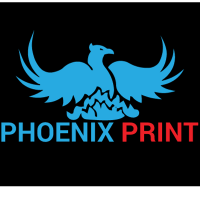Your Cart is Empty
Standard AQ Folders
$760.00 - $3,255.00
Standard AQ Folders
4-5 Business days + Shipping
Standard AQ Folders refer to a systematic and organized approach to file management within the context of a Quality Assurance (QA) process. In any quality-driven environment, maintaining meticulous records is paramount to ensuring consistency, traceability, and compliance with established standards.
These folders serve as the backbone of QA documentation, housing vital information, reports, and artifacts essential for evaluating, monitoring, and improving processes and products. Typically, they adhere to a standardized structure, facilitating ease of navigation and retrieval of pertinent data.
A typical Standard AQ Folder structure might include:
-
Documentation: This section encompasses all relevant policies, procedures, and guidelines governing the QA process. It serves as a reference point for team members to understand the overarching framework within which they operate.
-
Test Plans and Cases: Here, detailed plans outlining the testing approach, methodologies, and criteria are stored. Test cases, encompassing step-by-step instructions for executing tests and expected outcomes, are also included.
-
Test Results and Reports: This segment contains the outcomes of executed tests, along with comprehensive reports analyzing the findings. It provides stakeholders with insights into the product's quality and highlights areas for improvement.
-
Defect Tracking: Within this section, records of identified defects, including their severity, status, and resolution strategies, are maintained. This facilitates effective bug management and ensures that issues are addressed promptly.
-
Change Management: Documentation related to any changes introduced during the QA process is housed here. This includes change requests, approvals, and impact assessments, ensuring transparency and accountability.
-
Metrics and Performance Data: Quantitative measures of QA performance, such as defect density, test coverage, and cycle time, are recorded in this section. These metrics enable continuous evaluation and optimization of QA practices.
-
Training and Documentation: Resources for training new team members and educating stakeholders about QA processes and standards are stored here. This ensures consistency in understanding and implementation across the organization.
-
Audits and Compliance: Documentation pertaining to internal and external audits, as well as compliance with regulatory requirements and industry standards, is archived in this section. It serves as evidence of adherence to established guidelines.
Standard AQ Folders provide a structured framework for organizing and managing QA documentation, fostering efficiency, transparency, and accountability throughout the quality assurance lifecycle. By maintaining a centralized repository of essential information, teams can streamline collaboration, mitigate risks, and ultimately deliver high-quality products and services.

